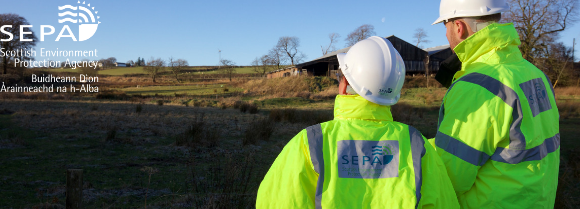Kintore Rendering Plant

Kintore rendering plant
Every day SEPA works to protect and enhance Scotland’s environment, and we are clear that compliance is non-negotiable.
SEPA is aware of activity by Scot Proteins Limited to re-commission the mothballed Kintore rendering plant following the loss of treatment facilities in England.
In line with strict permit requirements, the operator will need to demonstrate that the site is capable of meeting requirements on minimising odour and noise before it can be fully operational. SEPA officers are conducting targeted odour and noise assessments during the commissioning of the facility to assess potential impacts.
We have strongly advised the operator to liaise with the local community during the commissioning process. Members of the public concerned by environmental impacts from the facility can contact SEPA online at sepa.org.uk/report or contact SEPA’s 24/7 Pollution Hotline on 0800 807060.
Site history
In 2004, following repeated non-compliance and subsequent enforcement action, SEPA served a notice on the then operators of the rendering plant which revoked their permission to carry out rendering activities at the site.
In April 2007 an application from Oran Utilities Ltd was received for a new rendering plant to be built and operated on the same site. Following determination of the application a Pollution Prevention and Control (PPC) Permit was issued for the Kintore rendering plant in April 2008.
Oran Utilities were bought over in 2009 and underwent a name change to Scot Proteins Limited. Plans covering the initial phases of commissioning were submitted and approved in 2010 with formal commissioning starting at a slow pace. Commissioning ceased in 2013. While commissioning had not been completed the operators confirmed that they wished to keep the permit ‘live’ in order to complete commissioning and commence full operation at a later date.
SEPA is aware of activity by Scot Proteins Limited to re-commission the mothballed Kintore rendering plant following the loss of treatment facilities in England.
Whilst commissioning at the site ceased in 2013, SEPA requires the operator to start the process over again completely to ensure the site’s equipment is of a good standard and to provide reassurance to the local community.
Site activities
The site is a category one animal by-products rendering facility which processes material from abattoirs unfit for the food chain and fallen stock from farms.
Regulation
The Kintore rendering plant is regulated under the Pollution Prevention and Control (PPC) Regulations.
Permits set strict conditions that must be met to prevent or reduce any impact on the environment. There are strict conditions in the permit for the site which require the operator to minimise odour and noise impacts – and to carry out activities in accordance with Best Available Techniques for the sector.
In line with strict permit requirements, the operator will need to demonstrate that the site is capable of meeting requirements on minimising odour and noise before it can be fully operational.
SEPA officers are conducting targeted odour and noise assessments during the commissioning of the facility to assess potential impacts. Compliance is non-negotiable.
Frequently asked questions
What can the community do if they are affected by odours and noise from the site?
Members of the public concerned by environmental impacts from the facility can contact SEPA online at sepa.org.uk/report or contact SEPA’s 24/7 Pollution Hotline on 0800 807060.
SEPA investigates all reports of pollution and takes these reports very seriously.
What measures are in place to control odour and noise?
There are strict conditions in the permit which require the operator to minimise odour and noise impacts – and to carry out activities in accordance with Best Available Techniques for the sector.
The operator will need to demonstrate that the site is capable of meeting requirements on minimising odour and noise before it can be fully operational.
What is rendering?
Rendering is the cooking of animal carcases or animal by-product material.
Rendering allows waste material to be converted into more useful products and reduces the volume of material needing to be disposed of.
The rendering process involves the crushing and grinding of animal by-products, followed by heat treatment to reduce the moisture content and kill micro-organisms.
The process separates the tallow (liquid fat) from the bone and protein. The tallow can be used as a fuel for the process. The bone and protein is made into meat and bone meal and is stored offsite pending disposal.
What has been happening at the Kintore rendering plant site since commissioning ceased in 2013?
The site has not been in use since 2013. The operator, Scot Proteins Limited, continued to hold the permit.

